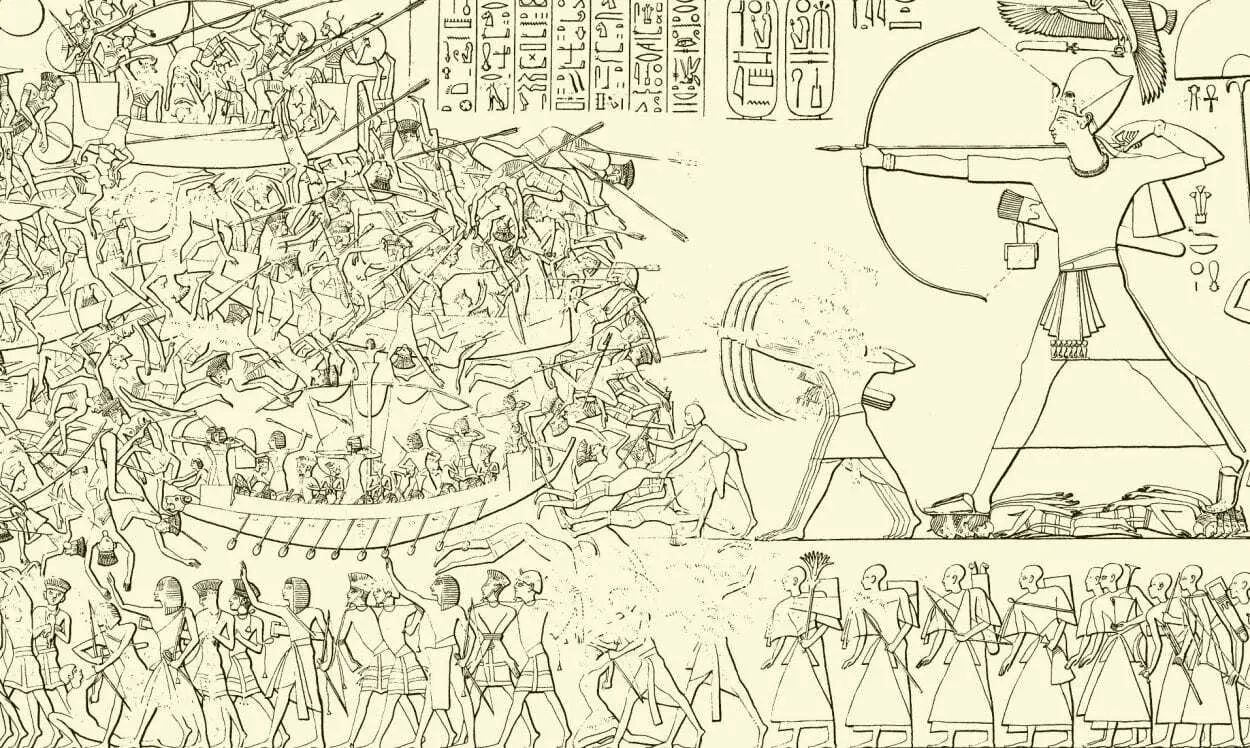During the late Bronze Age and early Iron Age, civilisations across the Near East, Aegean, Anatolia, North Africa, the Caucasus, the Balkans, and the Eastern Mediterranean collapsed and vanished off the map.
Historians believe the period was violent and culturally disruptive, marking the end of the Hittite Empire, the Mycenaean kingdoms, the Kassites, the Ugarit, the Amorite states, and the disintegration of the palace economy of the Aegean. Some states survived the collapse (albeit saw a period of decline), that includes the New Kingdom of Egypt, Assyria, Phoenicia, and Elam.
Historians describe the period as the “the worst disaster in ancient history”, with various theories behind the collapse suggesting environmental factors, drought, a general systems collapse, technological changes in warfare, disruption in trade, a volcanic eruption, and the elusive Sea People.
Virtually nothing is known about the Sea People, with the only evidence of their existence coming from sparse contemporary sources, although the evidence is interpretive at best, and often debated in scholarly circles.
It has been proposed that the Sea People was a seafaring confederation who may have originated from western Asia Minor, the Aegean, the Mediterranean islands, or Southern Europe.
The term “peuples de la mer” (literally meaning “peoples of the sea”) was first concocted by French Egyptologist Emmanuel de Rougé whilst studying reliefs at Medinet Habu, becoming further popularised with an associated migration theory in the late 19th century.
The historical narrative for identifying the Sea People stems primarily from seven Ancient Egyptian sources (with some information from Hittite sources), which names nine ancient cultures possibly responsible: the Denyen, the Ekwesh, the Lukka, the Peleset, the Shekelesh, the Sherden, the Teresh, the Tjeker, and the Weshesh (further proposals from narratives in other civilisations includes the Etruscans, Trojans, Philistines, Mycenaens, and even Minoans).
One such source (the Tanis Stele II) notes an event during the reign of Ramesses II, where the Nile Delta was attacked by raiders of the Sherden. An inscription on the Stele notes: “the unruly Sherden whom no one had ever known how to combat, they came boldly sailing in their warships from the midst of the sea, none being able to withstand them.”
A narrative from the reign of Ramesses III (2nd Pharoah of the 20th Dynasty), also records waves of invasions by seafaring peoples, with the most detailed account being found at his Medinet Habu mortuary temple in Thebes, where Ramesses III is depicted forcing back the invaders during the “Battle of the Delta” around 1175 BC.
An inscription on the Medinet Habu mortuary temple states:
“Now the northern countries, which were in their isles, were quivering in their bodies. They penetrated the channels of the Nile’s mouths. Their nostrils have ceased (to function, so that) their desire is [to] breathe the breath. His majesty is gone forth like a whirlwind against them, fighting on the battlefield like a runner. The dread of him and the terror of him have entered in their bodies; (they are) capsized and overwhelmed in their places. Their hearts are taken away; their soul is flown away. Their weapons are scattered in the sea.”
A study on references to the Sea People have highlighted hundreds of possible mentions in historical text (see “The ‘Sea Peoples’ in Primary Sources” by Matthew J. Adams), with the elusive Sea People remaining just a footnote in history, as the bogeyman of the Bronze Age.
Header Image Credit : Public Domain







